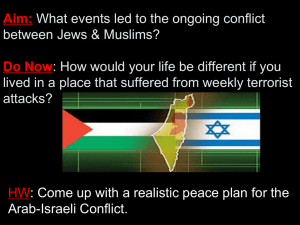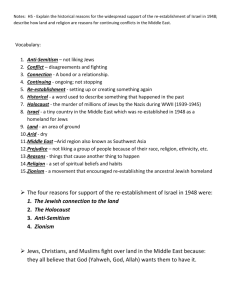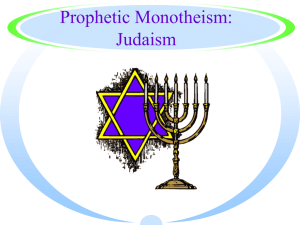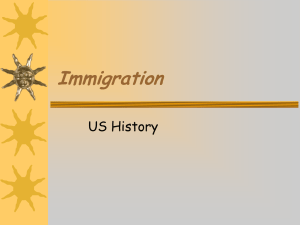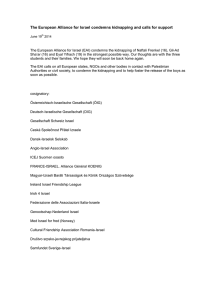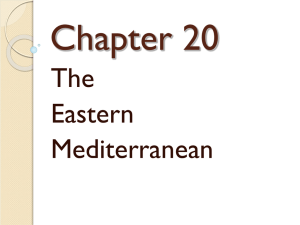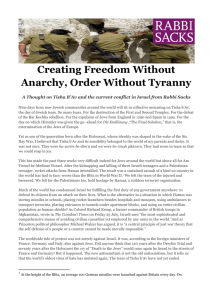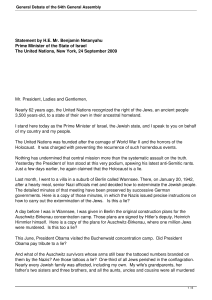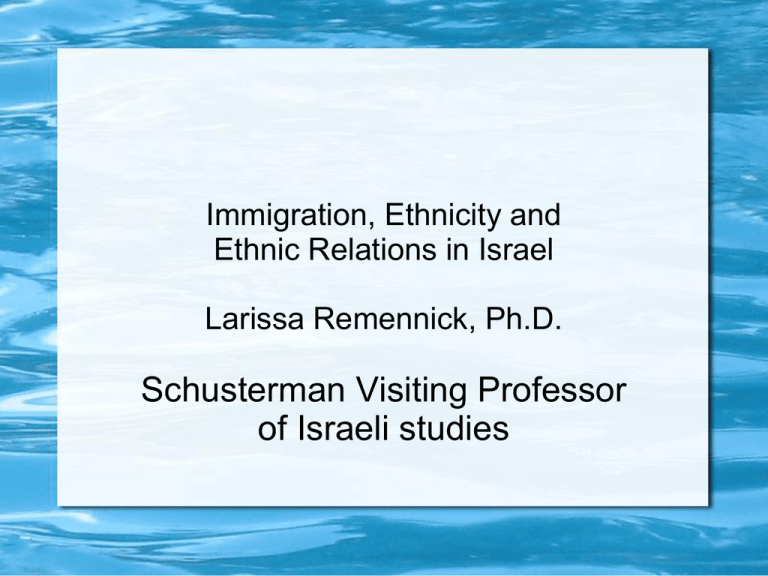
Immigration, Ethnicity and
Ethnic Relations in Israel
Larissa Remennick, Ph.D.
Schusterman Visiting Professor
of Israeli studies
Israel as Ultimate Immigrant
Society
95% are 1st, 2nd or 3rd generation
immigrants
35% were born outside of Israel
Major ethnic groups: Palestinians (20%),
Ashkenazi Jews (30%), Sephardic/Mizrahi
Jews (30%), Mixed Jewish Ethics (15%);
non-Jews from FSU (4%), Black Ethiopian
Jews (1%)
Historic outline: late 19-early 20 century
Aliyah waves, pre-state immigrants of the
Israel as Ethnic Democracy
The Law of Return (1950/1970) regulates
immigration to Israel. 'Jew' for the
purposes of Aliyah& citizenship is defined
broadly similarly to the Nazi anti-Jewish
laws of the 1930s
The gap between a civic and Halachic
definitions of Jewishness as source of
discrimination of non-Jews
Lack of separation between state and
Ethnic democracy (continued)
Lack of Constitution and system of Basic
Laws
The Law of Return does not include Arabs
Minority rights – political representation,
freedom of occupation, non-discrimination
by sex, age, ethnicity or religion
The problem of occupied territories and
status of Palestinians beyond the Green
Line (including East Jerusalem)
Jewish Israel: The lines of social
stratification
Ahkenasim, Spharadim & Mizrahim
Old-timers vs. recent immigrants
Social class and wealth
Center vs periphery
Political right-center-left-radical left
Skin color, accents, dress & behavior codes
The pillars of Israeli identity
Nation-building project on-going
Militarism and 'security culture'
Hebrew mono-lingualism at the expense of
diaspora languages
Zionism or Post-Zionism?
Familism and 'motherhood mandate'
Immigration & Absorption
The Great Russian Aliyah of the 1990s
Driven by push factors – demise of the USSR
Other destination countries closing their doors
About 1,000 immigrants between 1989-2004, among
them half just between 1990&1993
High on human capital but low on Jewish identity
High % of mixed families and non-Jews
Multiple integration challenges
Ethiopian Immigrants in Israel
Arriving in two organized airlifts: 1984 & 1991
Many families split by Israel's migration
decisions (Jews vs Falashim)
Hard sacrifices and difficult road to Aliyah
Low human capital and pre-modern society
Problems of integration & racism
Emigration or Yerida?
About 750,000 Israelis live abroad more or less
permanently (US, Canada,Europe, Australia)
Shuttle movement to study and work
Immigrants returning to origin countries:
Russians 10%
Americans 30%
French 20%
Keeping two homes


